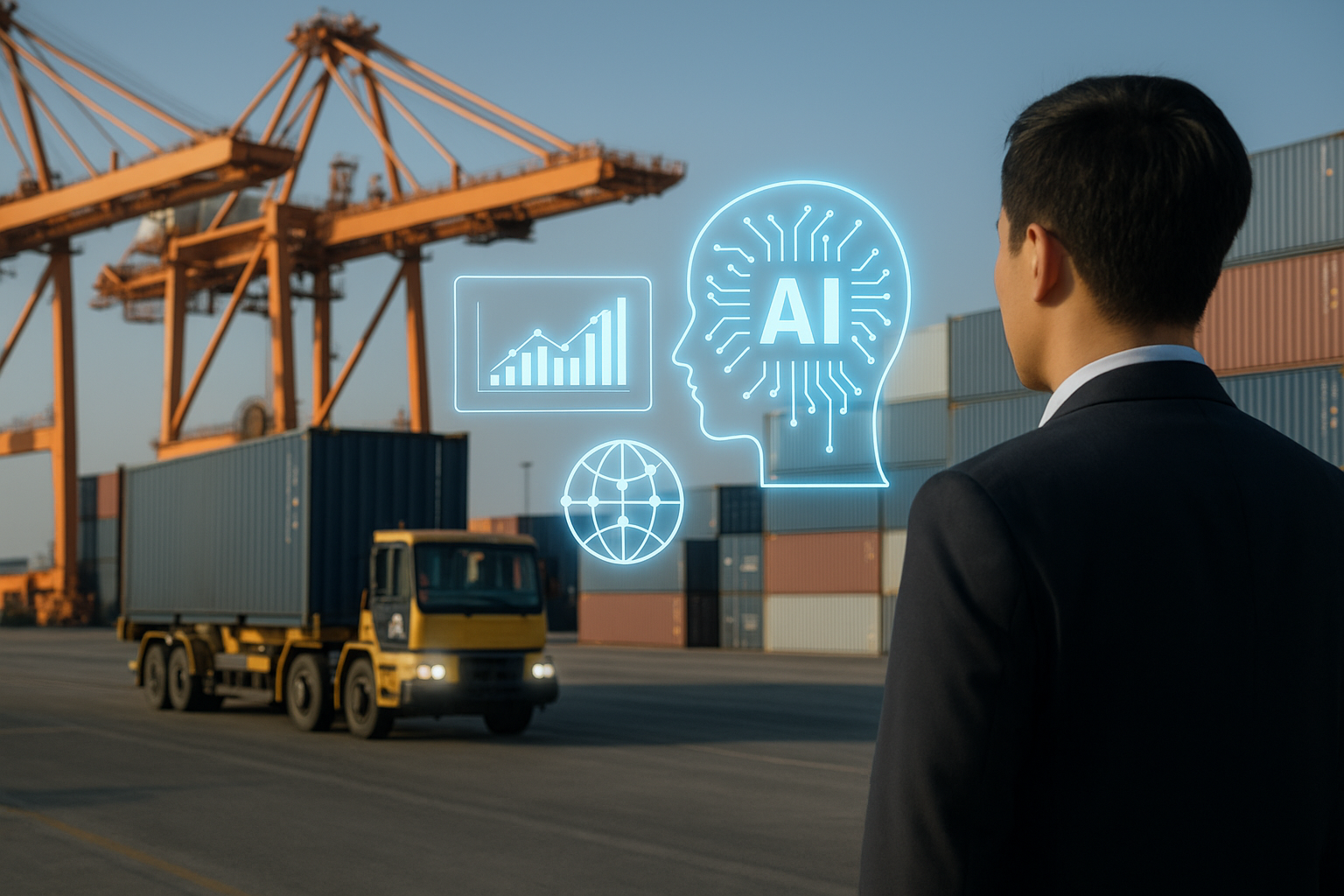AI transformation in maritime logistics demands resilient governance
Cybersecurity risks also emerged as a critical vulnerability, particularly in an ecosystem that heavily relies on digital surveillance, real-time tracking, and interconnected systems. A cyberattack exploiting weak encryption or insufficient data segregation could paralyze operations, leak sensitive information, and cause cascading failures in cargo transportation and customer service chains.

The global logistics industry is at a critical inflection point as artificial intelligence (AI) is rapidly moving from experimental hype to operational necessity. A newly published study in the Journal of Marine Science and Engineering, titled “Strategizing Artificial Intelligence Transformation in Smart Ports: Lessons from Busan’s Resilient AI Governance Model,” introduces a resilience-based framework to guide AI transformation (AX) in port logistics.
Using Busan Port’s transition as a case model, the paper outlines a comprehensive strategy that integrates risk analysis, ethical governance, and scenario-driven planning to help port operators navigate the sociotechnical challenges of AI adoption while maintaining competitiveness and regulatory compliance in a volatile global trade environment.
What are the risks undermining AI transformation in container-terminal operations?
To identify systemic threats during the AI transformation of container terminals, the researchers first conducted a text-mining analysis of 1205 academic articles from 2020 to 2024. This revealed 13 core risk factors, including data inaccuracy, employment shifts, cybersecurity breaches, ethical concerns, and algorithmic bias. These factors were structured into a comprehensive fault tree, with the top event being the failure of AX implementation.
The analysis highlighted data accuracy, high implementation costs, and operational inefficiency as key intermediate failures that cascade into broader system breakdowns. For example, AI systems plagued by data inaccuracies, stemming from technical errors or incomplete sensor inputs, could mismanage cargo stowage and scheduling. The result: malfunctioning automation, privacy infringements, eroded user trust, and potential regulatory sanctions.
Cybersecurity risks also emerged as a critical vulnerability, particularly in an ecosystem that heavily relies on digital surveillance, real-time tracking, and interconnected systems. A cyberattack exploiting weak encryption or insufficient data segregation could paralyze operations, leak sensitive information, and cause cascading failures in cargo transportation and customer service chains.
How can these risks be strategically overcome?
To counter these failures, the researchers developed a two-part strategic vision: one for averting worst-case scenarios and another for achieving a resilient and successful AX outcome.
For each identified risk, the authors proposed tailored response measures. For instance, to address data inaccuracy, the study recommends deploying real-time error detection systems, redundant server architectures, and institutionalized data-authentication protocols. These would ensure trust among stakeholders and safeguard against system failures.
To mitigate implementation costs, the authors propose leveraging government subsidies and creating collaborative infrastructure-sharing models among smaller ports. This would lower the entry barrier for AI adoption and prevent the deepening of the digital divide between large and small ports.
Operational inefficiencies could be addressed by enhancing AI system learning capabilities, establishing red-team oversight units, and integrating ethical accountability checks into decision-making protocols. In terms of cybersecurity, the authors recommend embedding privacy-by-design principles, anonymization technologies, and real-time intrusion detection into AI systems from the outset.
A rigorous scoring framework was also established, using the Birnbaum importance metric to quantify how much each risk factor contributes to systemic failure. Based on this analysis and stakeholder evaluations, strategic measures were ranked and grouped into short-, medium-, and long-term actions. High-priority short-term actions include developing privacy-protection mechanisms and establishing dedicated cybersecurity budgets and R&D programs.
What roadmap can guide a resilient AI paradigm shift?
The study culminates in a backcasting-based roadmap that offers a phased approach for transitioning container terminals into AI-resilient operations over a 10-year horizon.
Short-term (1–2 years): Immediate priorities include implementing data and privacy safeguards, launching port-specific cybersecurity certification protocols, and initiating foundational R&D for AI security solutions. The aim is to create a stable operational bedrock that can support more advanced systems.
Mid-term (3–5 years): This stage emphasizes refining AI capabilities and fostering human–AI collaboration. Key strategies involve optimizing algorithms, deploying real-time monitoring systems, and setting up integrated ethical review processes. Workforce retraining programs and stakeholder engagement initiatives are also crucial to ensure internal adoption and minimize resistance.
Long-term (5–10 years): The final stage focuses on scaling the AI system across the entire national port infrastructure. Strategic actions include integrating AI with legacy systems, building automatic error recovery systems, and introducing insurance and certification mechanisms. Regulatory reforms supporting AI standardization and ethical compliance are considered essential to consolidating long-term gains.
To institutionalize this roadmap, the study proposes a resilient AI governance model comprising four pillars:
- Framework Establishment based on compliance with global standards like the EU AI Act and IMO guidelines.
- Risk Assessment through feedforward modeling, enabling early detection and prevention of system vulnerabilities.
- Response Management with real-time monitoring, ethical early-warning systems, and scenario-based protocols.
- Stakeholder Engagement to ensure transparency, organizational accountability, and internalized AI literacy across all levels of port management.
- FIRST PUBLISHED IN:
- Devdiscourse










